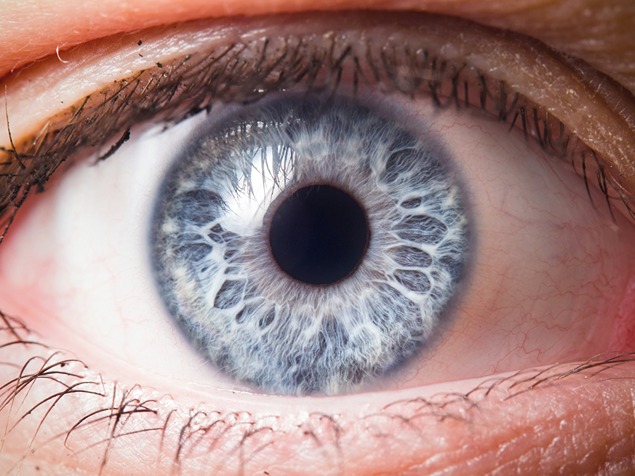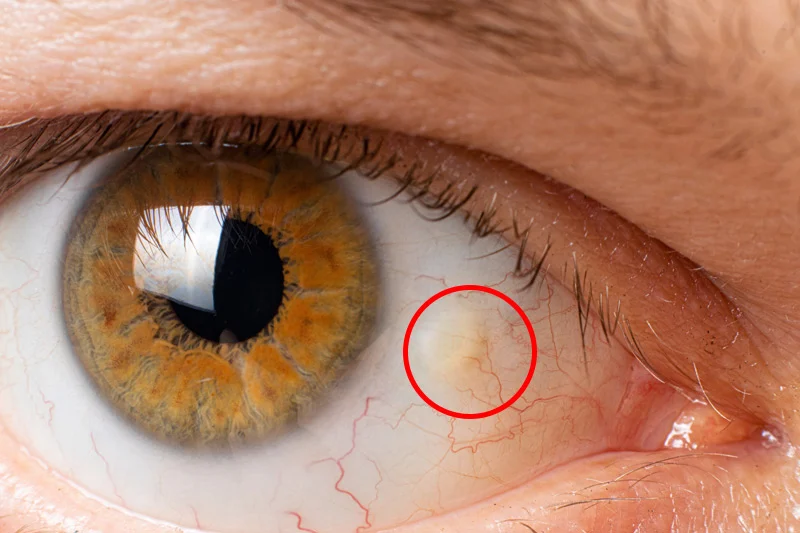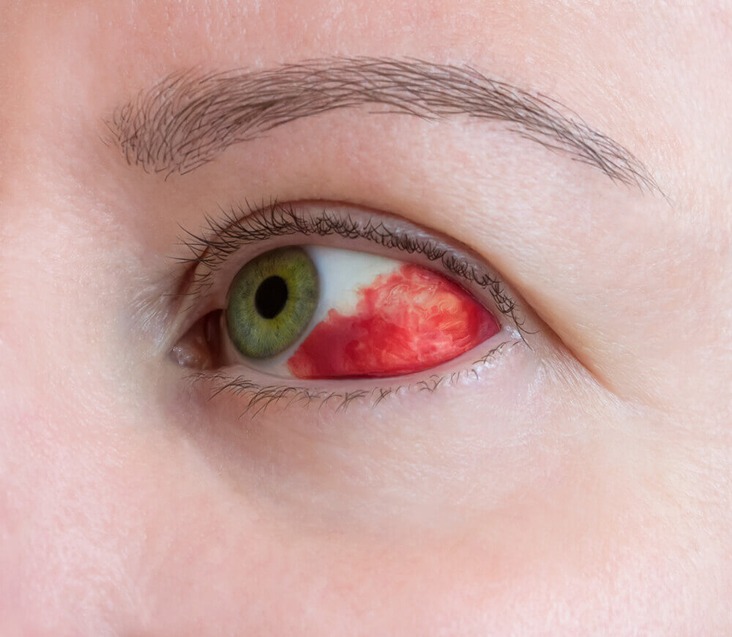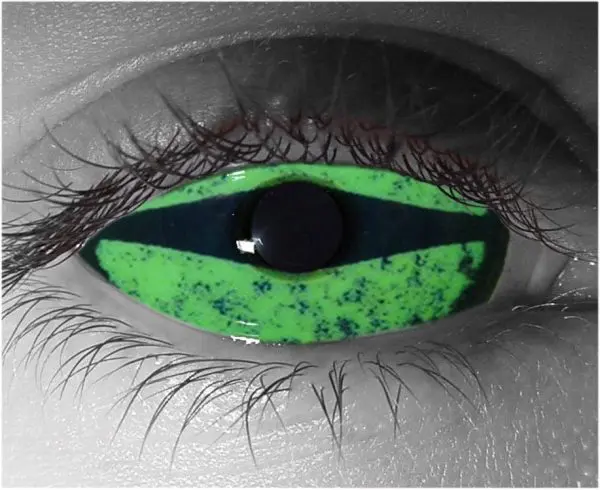Common Scleral Conditions
Sclera is a scientific term used to describe what most people call the “whites” of the eyes. Technically, the sclera that we see at the front of the eye is known as the anterior sclera and it only forms a portion of this incredible connective tissue. The full sclera wraps around the eye from the cornea all the way back to the optic nerve.
While damage to the sclera doesn't usually affect your vision, there are a few sclera conditions everyone should know about. Interestingly, a quick look at the colour of your sclera could tell you a lot about your overall health.
In this article, we explain exactly what the sclera is, and how it supports healthy vision. You’ll also learn some of the more common diseases associated with this significant portion of the eyes.
What Is The Sclera?

As mentioned above, the best way to describe the sclera is as the “whites” of the eyes. When you look in a mirror, the sclera encompasses all the areas around your corneas and travels back to the optic nerve.
Scientists say the sclera is mostly made up of tiny fibers and a special protein called collagen. In some areas, the sclera has a thickness of about 1 mm, which makes it one of the thickest connective tissues in the eye.
Surprisingly, the sclera has almost no blood vessels of its own, which means it has to rely on nearby structures for nutrients. Indeed, the sclera gets most of its nutrients from two clear tissues above it known as the episclera and the conjunctiva. Both of these thin and transparent tissues have many blood vessels of their own.
As for the sclera’s functions, it’s really only designed to help the eyes maintain a healthy spherical shape. Due to its toughness, the sclera is also of great help in protecting the eyes from damage due to direct trauma.
Exploring Common Scleral Conditions
Interestingly, the familiar conditions people assume affect the sclera actually affect the clear conjunctiva, such as conjunctivitis. Since this layer is transparent, you can easily see signs of injury or stress appear on the conjunctiva as if they were on the sclera. Most true scleral conditions aren’t household names, but there are a few worth mentioning. Below, we’ll discuss the more common scleral and conjunctival eye disorders.
Yellowy Eyes: Scleral Icterus
One of the more common scleral disorders is officially known as scleral icterus, but you’ve probably heard it referred to as “yellow eyes.” As the nickname suggests, this disorder causes the whites of your eyes to turn yellow.
A common way to describe this yellowing of the eyes (and sometimes skin) is jaundice, which is derived from the French word “jaune,” which means yellow.
The most common reason people develop scleral icterus has to do with an increase of the yellowish chemical bilirubin in the bloodstream. Since bilirubin is produced mainly in the liver, it’s no surprise that people who develop scleral icterus often have liver issues. Another common reason for scleral icterus has to do with some forms of the hepatitis virus.
If you notice a yellow pigment starting to form on your eyes, then you should consult a medical professional ASAP. Most likely your doctor will take a sample of your blood and check your liver function.
Yellow Dots In The Eyes: Pingueculae

Another common condition that causes yellow discolouration to appear in the sclera is pingueculae. Basically, pingueculae - pronounced ping·gweh·kyuh·luh -are tiny bumps that form on the conjunctiva. These degenerative nodules of the conjunctiva present as yellowish spots that are composed of hyaline and elastic tissue, and proteins and they tend to occur close to the nose.
While pingueculae may be irritating and unsightly, they aren’t normally a cause for concern. In most cases, pingueculae are caused by prolonged exposure to UV rays and are more common after the age of 70. Therefore, it’s highly recommended anyone prone to developing these spots wears UV-blocking sunglasses whenever outdoors.
To relieve eye discomfort associated with pingueculae, it’s a good idea to use re-wetting drops, place wet compresses over your eyes, and limit electronic screen time.
What’s The Deal With “Pink Eye?”
A condition somewhat related to subconjunctival hemorrhage is known as conjunctivitis. Like subconjunctival hemorrhages, conjunctivitis adversely affects the blood vessels in the conjunctiva. The main difference between conjunctivitis and Subconjunctival Hemorrhage is that with conjunctivitis, allergens, bacteria, or viruses are the cause of the blood vessel inflammation.
In addition to red eyes, conjunctivitis sufferers usually experience itchy eyes, increased tears, and eye pain. People with more serious viral or bacterial strains of this disease might experience eye discharge in the morning.
Anyone who has these warning signs should visit their doctor for a check-up to determine what’s causing this disease, if it is a virus or bacteria then conjunctivitis is quite contagious. Thankfully, most cases of conjunctivitis can be treated with rest, medication, and plenty of water.
Bulging Eyes: Scleral Ectasia
The term scleral ectasia refers to a wide range of eye disorders that cause the sclera to bulge outwards. Typically these diseases are caused by some type of injury to the cornea that causes the sclera to bulge. Scleral ectasia episodes could, however, also be an adverse reaction to some surgery procedures such as LASIK.
Thankfully, there are now specially designed contact lenses that can help reduce scleral swelling in patients with ectasia. Doctors might also prescribe certain anti-inflammatory medications or eye drops to help reduce symptoms of this disorder.
Since many cases of scleral ectasia are related to issues with the cornea, your doctor might also need to address your specific corneal issue. These treatments could range from prescription medications to full corneal transplant surgery.
Red Spot In The Eyes: Subconjunctival Hemorrhage

Since the sclera has virtually no blood vessels, any form of eye redness is usually caused by a disturbance in the clear conjunctiva. Probably the most common of these issues is known as a subconjunctival hemorrhage. Basically, this condition refers to a broken blood vessel in the conjunctiva that causes eye redness.
There are many potential reasons for subconjunctival hemorrhages ranging from heavy straining, weightlifting, excessive coughing and direct trauma to the eye such as being poked by a finger. People with certain conditions like diabetes and hypertension are also very likely to develop these red marks.
While red splotches or dots in your eyes may look alarming, they usually aren’t a major cause for concern. Within a few days or weeks, these subconjunctival hemorrhages should clear away on their own. Not unlike a bruise, they slowly change colour from red to brown before being reabsorbed by the body. If you’re concerned about eye redness and/or experience symptoms like eye pain or itchiness, however, then you should visit an optometrist to check your symptoms.
Can The Sclera Turn Blue?
Yes, it is possible for your sclera to appear blue! Although it’s quite rare, there are people who suffer from a condition that causes their scleras’ thick fibers to become incredibly thin. These thinned-out fibers create openings through which the underlying veins can be seen.
Often blue sclera is a symptom of another major disorder involving the body’s connective tissues such as osteogenesis imperfecta or OI. It is possible, however, to develop blue sclera as the result of an iron deficiency. As with any eye disorders, it’s best to speak with your doctor if you notice blue sclera.
Are There Sclera Decorative Contact Lenses?

Although most people interested in decorative contact lenses want to change their iris colour, there are a few extravagant vanity lenses that can change the colour of the sclera. These larger-than-average lenses are able to cover the entire eye and change your sclera from white to almost any colour imaginable.
Sclera decorative contact lenses are extremely popular in the film and music industry, these are often hand painted to complete a specific costume or look.
As with any decorative contacts, it’s extremely important to discuss scleral lenses with your doctor before you decide to try them. Since these lenses are usually larger than typical contact lenses, they can be uncomfortable and problematic to insert and remove if not fitted properly.
As with all contact lenses, it’s extremely important to practice proper hygiene. This includes washing your hands before handling lenses, throwing lenses away once they’re expired, and taking out your lenses before bed.
There’s More To The Sclera Than Meets The Eye!
The sclera isn’t as crucial to vision as other parts of the eye, but it does play an essential role in maintaining the eye’s tough structure and connecting surrounding tissues, and can also serve as a barometer for a person’s overall health.
If your sclera is looking, yellow, or red, has spots, or just doesn't feel right then it is best to seek medical advice.
Author: John Dreyer Optometrist Bsc(Hons), MCOPTOM, DipCLP
Created: 27 Apr 2023, Last modified: 28 Feb 2025

